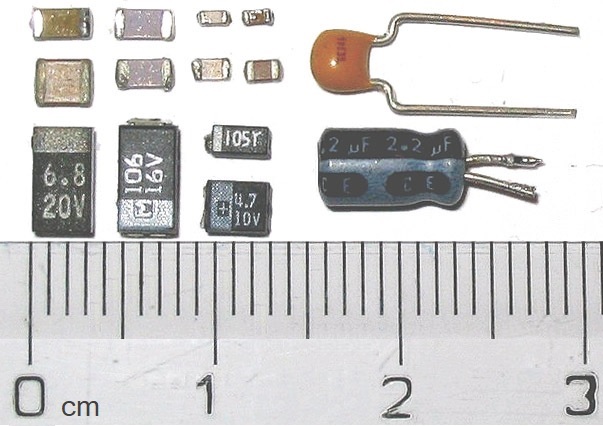General:
- start simple
- start with fuzz
- don't even bother looking at building an analog delay pedal yet :)
All you really need to know about electrical components:
Resistors
http://en.wikipedia.org/wiki/Resistor
Resistors restrict the flow of electricity. The power of a resistor is measured in ohms. The more ohms, the less electricity flow.
Potentiometers
http://en.wikipedia.org/wiki/Potentiometer
This is basically a resistor that can be turned up or down. They have a range of resistence that they can provide. A master volume knob is typically a potentiometer between the primary amp circuit and the speakers where 0 is enough ohms to completely cut the signal and 10 (or 11 :)) is the poteniometer completely turned off and providing no resistence.
Capacitors
http://en.wikipedia.org/wiki/Capacitor
This is almost like a mini battery that releases its charge when full. A capcitor can "fill" at a pretty regular rate, which allows them to be used for timers. A capacitor in an effects pedal or a synth would typically be used to smooth out a signal and provide the "pulse" of the audio.
Diodes
http://en.wikipedia.org/wiki/Diode
A diode is used to make elecricity flow only one way down a wire. Diodes are sensitive to heat, so be careful with your soldering iron around these or you will fry them. Also, don't send signal down the wrong direction. That will also fry them. Diodes are kind of a double pain in the ass for these reasons. In effects pedals, they often provide a bit of the "color" to the tone.
Transistors
http://en.wikipedia.org/wiki/Transistor
Transistors are used to amplify a signal. They always have 3 prongs. 1) the input signal (example: some audio from a guitar) 2) the control prong, which determines how much to amplify the signal and 3) the output signal. Fuzz pedals exploit transistors by overloading them with way more electricity on the control prong than they are designed for, causeing a "clipping effect". This effect can be seen on an oscilliscope. Here's an example of that:
I would highly recommend this as your first pedal/module:
http://beavisaudio.com/bboard/projects/bbp_PWM.pdf
It is an LM386 fuzz pedal. It is extremely cheap to build (you could probably do it for under 10 bucks), and you can buy 100% of the parts from RadioShack, so you don't have to wait around to ship a 3 cent diode from Hong Kong when you (inevitably) fry one. It will probably take you about an afternoon to build.
Great site with kits and build breakdowns:
https://www.smallbearelec.com/HowTos/HowTos.html
I do not know how active this guy is anymore, but he is a total badass and his project page is great inspiration:
http://beavisaudio.com/projects/
BYOC, a site that focusses on providing schematics for building clones of popular pedals:*





hey @morganherlocker the bbp_PWM.pdf link is currently broken... anyway i could get a copy of this?